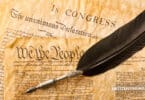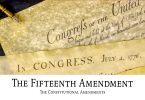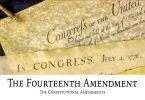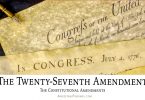The Twenty-Second Amendment to the US Constitution provides a limit to the number of times someone is eligible to be elected as President of the United States. Prior to the adoption of this amendment, there was no limit to the number of times a person could be elected as US President. The amendment was approved by Congress in March of 1947, and ratified by the requisite number of states on February 27, 1951, when it became law in this country.
What Does it Say?
“Section 1. No person shall be elected to the office of the President more than twice, and no person who has held the office of President, or acted as President, for more than two years of a term to which some other person was elected President shall be elected to the office of the President more than once. But this Article shall not apply to any person holding the office of President when this Article was proposed by the Congress, and shall not prevent any person who may be holding the office of President, or acting as President, during the term within which this Article becomes operative from holding the office of President or acting as President during the remainder of such term.
Section 2. This Article shall be inoperative unless it shall have been ratified as an amendment to the Constitution by the legislatures of three-fourths of the several states within seven years from the date of its submission to the states by the Congress.”
What Does it Mean?
This amendment was put forth after Franklin D. Roosevelt had been elected to the office of President of the United States an unprecedented four times. George Washington had set a precedent of not running for president more than twice, and after this, a two-term limit became a traditional limit that all future US presidents followed until Roosevelt. After Roosevelt (who crossed to the other side at the beginning of his fourth presidential term), Congress became concerned that unlimited presidential terms might lead to a dictatorship or monarchy.
The amendment limits the number of times a person can be elected US President to twice. If someone is appointed to fill an unexpired presidential term, and that term is for more than two years, they are prohibited from running for President on their own more than once.
Term limits for US Presidents were discussed at the Constitutional Convention of 1787. People such as Alexander Hamilton and James Madison supported the appointment of a US President for life, much like is done with US Supreme Court appointees. Others supported term limits, believing allowing someone to be President for life to be too similar to a monarchy (which the US had just shed itself of in the Revolutionary War). One of the Constitution’s early drafts gave a US President one seven-year term. Finally, the Founding Fathers decided on four-year terms, with no limit to the number of times one could be elected to the office.
Even Thomas Jefferson wrote about the issue during his own presidency. About halfway through his second term as US President, Jefferson wrote:
“If some termination to the services of the chief magistrate be not fixed by the Constitution, or supplied by practice, his office, nominally for years, will in fact, become for life; and history shows how easily that degenerates into an inheritance.”
Almost two centuries after the Founding Fathers first considered the issue, those term limits for being elected as US President were finally, officially put into place.






